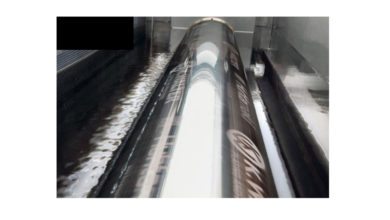UK moving to polymer banknotes
The Bank of England, following a three year research programme and consultation with both the cash industry and general public, has announced the next £5, £10 and £20 banknotes will be printed on polymer.
Polymer banknotes are manufactured from a transparent plastic film, specially coated with an ink layer that enables it to carry the printed design features of banknotes. The material allows the inclusion of ‘windows’ or clear portions in the design which enhance protection against counterfeits.
The new £5 note will be issued on 13 September 2016. The £10 note will be issued in summer 2017 and the £20 note by 2020. The paper £5 note can be used until its legal tender status is withdrawn in May 2017. The current £50 note was issued in 2011 and there are no plans to replace it in the near future.
Polymer banknotes have been selected because they are cleaner, more secure, and more durable than paper banknotes. Over 30 countries currently issue polymer notes. These include Australia (who introduced them in 1988), New Zealand, Mexico, Singapore, Canada and Fiji.
The Bank commissioned an independent study from PE International to assess the environmental impact of the Bank’s current paper banknotes and polymer banknotes. The study considered the impact of each stage of the banknote life cycle on 7 environmental indicators, including global warming potential, water and energy usage, ozone creation and environmental toxicity.
Polymer showed benefits over cotton paper for all the main phases of the life cycle. For the majority (6 from 7) of the indicators covered by the study it has been shown that polymer banknotes have a lower environmental impact than paper banknotes. Polymer banknotes last at least 2.5 times longer than paper banknotes and this is the main factor leading to their stronger environmental performance. This is mainly due to the reduced environmental burdens associated with raw material production and processing of new banknotes to replace unfit ones.
The new notes will be around 15% smaller than the current paper notes but will retain the traditional look of the existing notes. Polymer notes will also have areas of raised print which will give them a tactile quality and reduce the slippery feel.
Some of the key security features for the new £5 note are (1) a large see-through window containing an image of the Queen and a foil Elizabeth Tower; (2) The Elizabeth Tower (Big Ben) is gold on the front and silver on the back; (3) The silver foil patch at the bottom of the tower has a hologram of the word ‘Five’ changing to the word ‘Pounds’; (4) The Silver foil patch at the top of the tower has an image of the coronation crown which appears 3D; and (5) Under ultra-violet light, the number 5 appears in bright red and green.
The polymer for the new fiver is made by Innovia who have a plant in Wigton, Cumbria. The notes are printed by De La Rue at the Bank of England’s print works in Essex.





